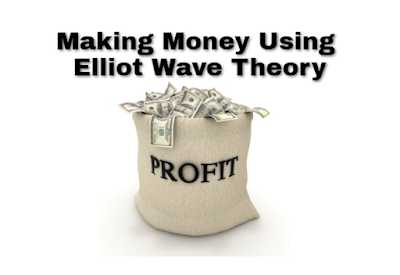The financial market is one of the avenues that allows innovativeness. The more innovative you are, the more money you will make period. After spending some time with the graphs and understanding the price action, you can develop a system that will give you an advantage over other traders (however in the year 2021 that is difficult to do nowadays, but still possible). Your system should work and have some supporting evidence to back it. That is what Ralph Nelson Elliott did to develop the Elliott Wave theory.
After Elliott was forced into early retirement due to illness, he was left with various price action graphs and studied them to understand the market price action. Ralph was able to identify fractal wave patterns that kept recurring. These waves could be seen in stock price movements and consumer behavior representing recurring long-term price change patterns directly related to changes in the sentiments and psychology of investors.
After Elliott was forced into early retirement due to illness, he was left with various price action graphs and studied them to understand the market price action. Ralph was able to identify fractal wave patterns that kept recurring. These waves could be seen in stock price movements and consumer behavior representing recurring long-term price change patterns directly related to changes in the sentiments and psychology of investors.
The pattern consists of two waves, impulse waves that create the trend and the corrective waves that oppose the larger trend. These waves are then fitted into larger set waves that have the same impulse and corrective pattern. This investing method is called Elliot Wave Theory.
Technical traders have profited from using Elliot Wave theory since the late 1930s. The reasoning behind the trading method is that the stock prices can be predicted as they move in up and down patterns referred to as waves. These waves are a result of the psychology or sentiments of investors.
As a trader with over 10 years of experience, it's pivotal to understand Elliot Wave Theory, as stocks do move in impulsive and corrective waves. However, there are severe limitations on how it should be used. In this article, I will summarize the key takeaways from Elliot Wave Theory to help you make money swing trading (as I have yet to discover its value in other types of trading timeframes).
Elliot Wave Impulse waves
These waves are composed of five sub-waves that form the net movement in the same direction as the trend of the next largest degree. It is the most prevalent motive wave hence easy to identify in the market. Like all motive waves, it has five sub-waves, where, three of them are motive and two are corrective. This creates a 5-3-5-3-5 structure. Where the 5-wave structure is shown below.
- The formation of this wave is governed by three cardinal rules:
- The second wave cannot retrace the first wave more than 100%
- The third wave can never be the shortest of the waves 1, 3 and 5
- The fourth wave cannot surpass the third wave at any given time.
If the pattern doesn't follow the above rules, it cannot be called an impulse wave. Check out an example of an idealized Impulse Wave shown below.
Elliot Wave Corrective Waves
They are also referred to as diagonal waves. These waves comprise three or a collection of three sub-waves whose net movement is in the direction opposite to the trend of the next largest degree. The corrective wave is further subdivided into five sub-waves with the difference being that the diagonal looks like either an expanding or contracting wedge. Note that corrective waves also follow the rules of motive waves.
To complete the process, the impulse and corrective waves are then fitted into a fractal with similar shapes to create a larger pattern. For example, a 30-day chart may be in the middle of a corrective wave, but a 7-day chart may indicate an impulse wave that is developing. This will give the trader with this combination a long-term bearish approach with a short-term bullish approach. An example of a corrective wave is shown below via the ABC labels which is the "3" structure described in the Impulse Wave section above.
What You Should Take Away From Elliot Wave Theory
This section is going to be quite controversial, as I deal out my thoughts on Elliot Wave Theory, and what you should take away from it to make money trading. Keep in mind I have been a winning trader for the last decade, so my opinion does have weight to it.
I have seen many traders, and blogs dedicated to trading via Elliot Wave Theory. I am sorry to say that it simply just isn't a profitable technique of trading. One reason I believe this to be the case is the excessive use of Elliot Wave theory, where there can be so many subjective interpretations of what the current wave count is, and what is corrective versus impulsive. It just simply does not have an edge.
I do realize Elliot Wave Theory does have a huge following with people spending hours and hours a day dissecting charts and figuring out what cycle a current stock or index is in. Despite, my negative stance on trading purely with Elliot Wave Theory, I do believe understanding its idea is key to being profitable swing trading.
As Elliot Wave theory describes, stocks do not go directly up, that is the main takeaway from Elliot Wave Theory, which everyone should understand. This is key to swing trading as stocks move very similar to the impulsive and corrective waves in Elliot Wave Theory. Understanding this, will give you patience in swing trading stocks, and not panic when a corrective wave occurs in the stocks you are trading.



